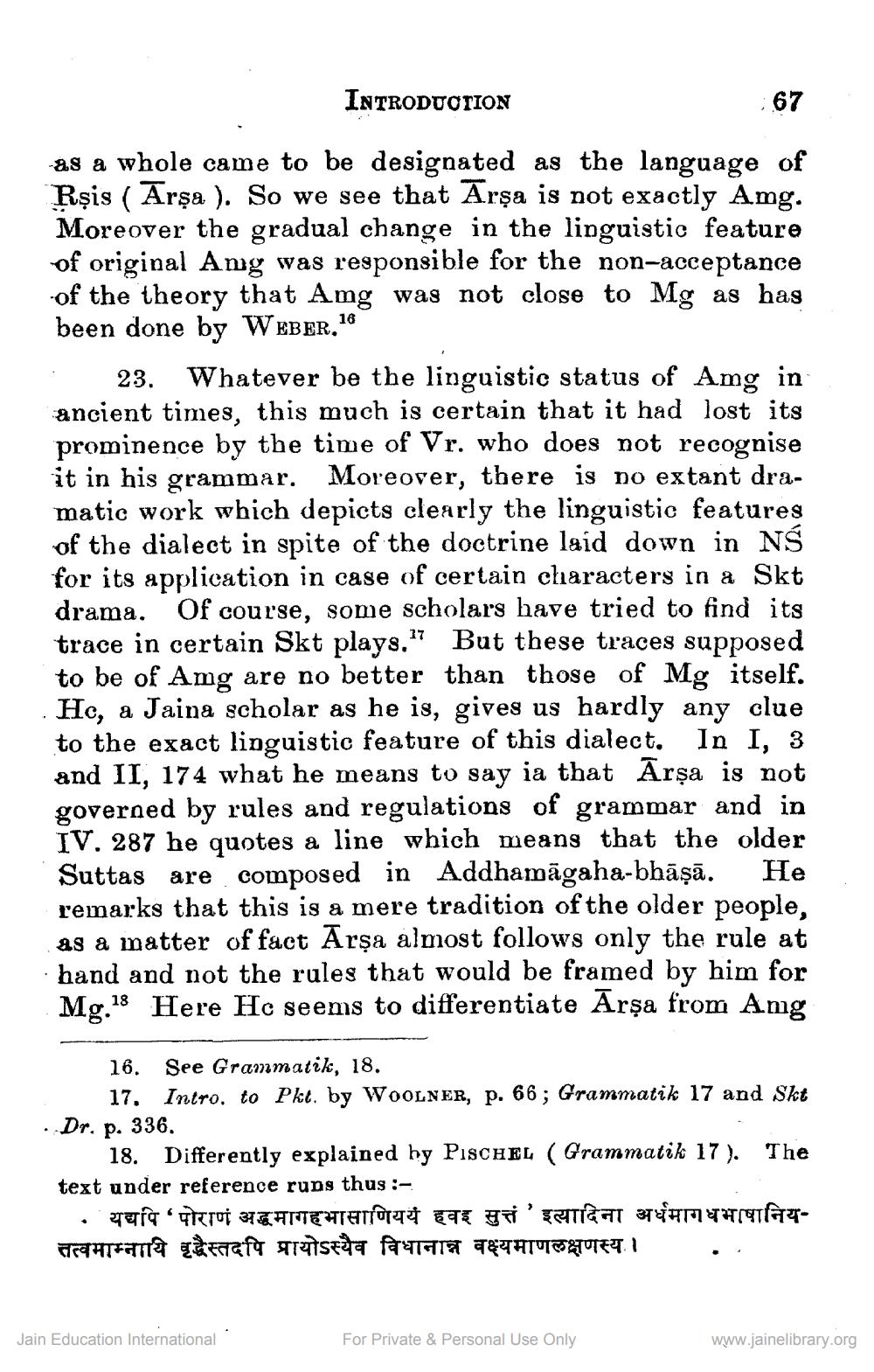________________
INTRODUCTION
67
as a whole came to be designated as the language of Rşis ( Arşa ). So we see that Ārşa is not exactly Amg. Moreover the gradual change in the linguistic feature of original Amg was responsible for the non-acceptance of the theory that Amg was not close to Mg as bas been done by WEBER.16 : 23. Whatever be the linguistic status of Amg in ancient times, this much is certain that it had lost its prominence by the time of Vr. who does not recognise it in his grammar. Moreover, there is no extant dramatic work which depicts clearly the linguistic features of the dialect in spite of the doctrine laid down in NS for its application in case of certain characters in a Skt drama. Of course, some scholars have tried to find its trace in certain Skt plays,"? But these traces supposed to be of Amg are no better than those of Mg itself. Hc, a Jaina scholar as he is, gives us hardly any clue to the exact linguistic feature of this dialect. In I, 3 and II, 174 what he means to say ia that Arşa is not governed by rules and regulations of grammar and in IV. 287 he quotes a line which means that the older Suttas are composed in Addhamāgaha-bhāṣā. He remarks that this is a mere tradition of the older people,
as a matter of fact Arșa almost follows only the rule at · hand and not the rules that would be framed by him for Mg.18 Here Ho seems to differentiate Arşa from Ang
16. See Grammatik, 18.
17. Intro. to Pkt. by WOOLNER, p. 66; Grammatik 17 and Skt Dr. p. 336.
18. Differently explained by Pischel (Grammatik 17). The text under reference runs thus :
• यद्यपि 'पोराणं अद्धमागहभासाणिययं हवइ सुत्तं ' इत्यादिना अर्धमागधभाषानियतत्वमाम्नायि वृद्धैस्तदपि प्रायोऽस्यैव विधानान्न वक्ष्यमाणलक्षणस्य। ..
Jain Education International
For Private & Personal Use Only
www.jainelibrary.org




